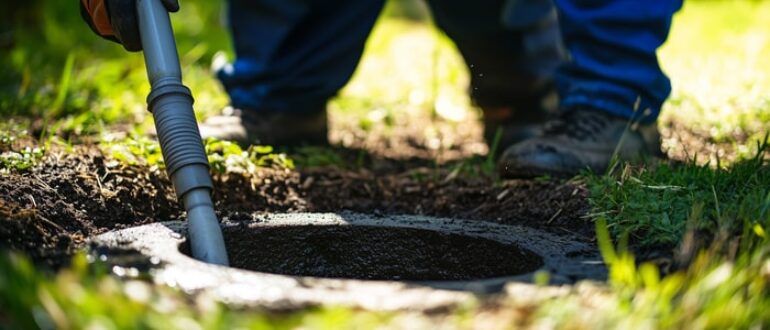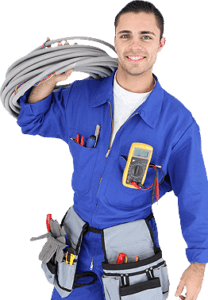
Plumbing plays a quiet but essential role in our daily lives—bringing in fresh water, removing waste, and ensuring everything from our showers to our dishwashers work as expected. Whether you’re trying your hand at a few DIY fixes or just want to better understand your home’s plumbing, learning the basics can go a long way.
At Plumbing Experts, we’re firm believers that when homeowners are more informed, they’re more empowered—especially when it comes to routine tasks like septic tank cleaning and general septic system maintenance.
The Core Components of Residential Plumbing
Understanding your plumbing starts with knowing its two main systems: the water supply system and the drainage system.
Water Supply System
The water supply system is responsible for bringing fresh water into your home. It consists of several key components:
- Water Meter: This measures the amount of water consumed in your household.
- Shut-off Valve: Located near the water meter, this valve allows you to turn off the water supply to your home in case of a leak or emergency.
- Pipes: These carry water from the main supply to various fixtures in your home.
Drainage System
The drainage system is designed to remove wastewater from your home efficiently. Key elements include:
- Traps: These are U-shaped pipes that hold water to prevent sewer gases from entering your home.
- Vent Pipes: They allow sewer gases to escape and help maintain proper atmospheric pressure in the drainage system.
- Septic System: In homes without access to municipal sewers, a septic system treats and disposes of wastewater.
Common Residential Plumbing Issues
Understanding common plumbing issues can help you identify problems early and decide when to seek professional help. Here are some frequent issues homeowners encounter:
Leaky Faucets
A leaky faucet is not only annoying but can also lead to significant water wastage. The primary cause is often a worn-out washer or O-ring. Such repairs are typically straightforward and can be handled with basic tools.
Clogged Drains
Clogged drains are a common nuisance in many households. They can occur in sinks, showers, or toilets and are usually caused by a buildup of hair, soap scum, or food particles. Regular maintenance using drain cleaners or natural remedies like baking soda and vinegar can help prevent clogs.
Running Toilets
A running toilet can significantly increase your water bill. This issue is often due to a faulty flapper valve, which can be easily replaced. Regular inspection of toilet components can help prevent this problem.
Septic Tank Maintenance
If you’re not on city sewer, septic tank cleaning and routine septic system maintenance are non-negotiable. Ignoring it can result in backups, bad smells, and expensive repairs. We recommend professional cleaning every 3–5 years, depending on household size and usage.
Simple DIY Plumbing Tips
While some plumbing issues require professional intervention, many can be resolved with simple DIY techniques. Here are 25 steps to guide you through some basic plumbing tasks:
- Gather essential tools like a plunger, wrench, and plumber’s tape.
- Familiarize yourself with the location of the main water shut-off valve.
- Regularly check for leaks under sinks and around toilets.
- Use a plunger to clear minor clogs in sinks and toilets.
- Replace faucet washers to stop drips.
- Clean aerators on faucets to maintain water flow.
- Inspect and clean out P-traps under sinks to prevent clogs.
- Regularly flush drains with hot water and vinegar to prevent buildup.
- Replace showerheads for improved water pressure and efficiency.
- Install water-saving fixtures to reduce consumption.
- Use plumber’s tape to seal leaky pipe joints.
- Drain the water heater annually to remove sediment.
- Check the water pressure and adjust the pressure regulator if necessary.
- Examine toilet flappers and replace if they are worn or leaking.
- Insulate exposed pipes to prevent them from freezing in winter.
- Install mesh covers on drains to catch hair and debris.
- Learn how to use a pipe snake to clear stubborn clogs.
- Check for corrosion or leaks in metal pipes.
- Inspect the dishwasher and washing machine hoses for leaks or wear.
- Know how to shut off the water supply to individual fixtures.
- Keep the contact information of a trusted plumbing service handy.
- Learn basic soldering techniques for copper pipe repairs.
- Understand the basics of your home’s septic system layout and function.
- Schedule regular professional inspections for your septic system.
- Stay informed about local plumbing codes and regulations.
When to Call the Experts
While DIY can save time and money, some plumbing jobs are better left to licensed professionals. Persistent leaks, sewer line issues, or recurring clogs might signal deeper problems. That’s where Plumbing Experts comes in—we’re here to take the stress out of plumbing with trusted service and real solutions.
Having a basic understanding of your home’s plumbing isn’t just about fixing small problems—it’s about staying proactive and protecting your investment. Tasks like septic tank cleaning and ongoing septic system maintenance shouldn’t be overlooked. And when things go beyond what a plunger or wrench can handle, we’re just a phone call away.
For more expert tips or to schedule a service, get in touch with us today. We’re always here to help keep your home running smoothly.



